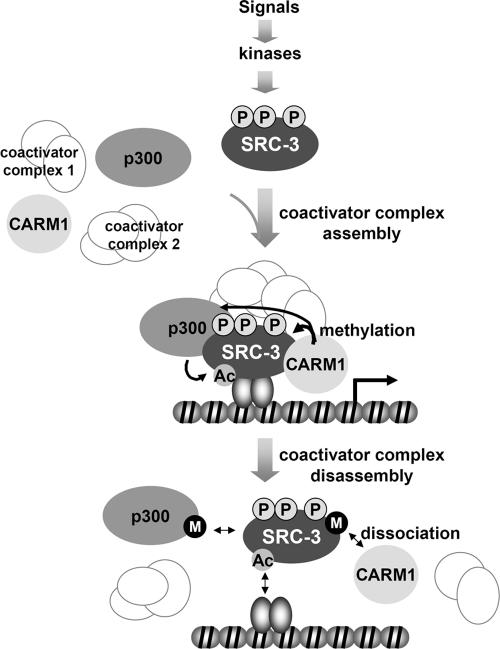FIG. 7.
Model for coactivator assembly and disassembly on estrogen-responsive promoters. SRC-3 is phosphorylated at distinct sites by different kinases induced by various signaling pathways. Dependent upon the differential phosphorylation patterns, SRC-3 may assemble different coactivator complexes at regulated target gene promoters. Estrogen signaling results in estrogen-bound receptors interacting with both promoter DNA and SRC-3 coactivator complexes. Enzymatic activities enriched in the complex modify core histones and thereby facilitate transcription initiation. After one (or limited) round(s) of transcription initiation and to terminate signaling, p300/CBP and CARM1 modify components within the coactivator complex, leading to disassembly of the complex and probably also dissociation of receptor from the promoter DNA. We propose that CARM1, and likely also p300/CBP, is a dual-function coactivator: it not only activates transcriptional initiation by modifying core histone tails but also terminates hormone signaling by disassembling the coactivator complex. It remains unknown as to how many of the transcriptional coactivators in the complex are reutilized for another round of transcription initiation or instead subjected to transcription-linked protein degradation.

